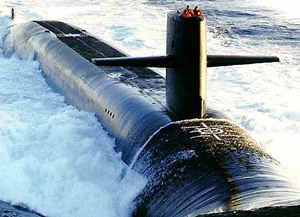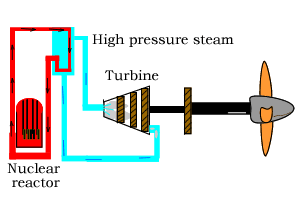Science of Conflict
Nuclear power
|
| Launched
30 April 1961, K-19, pictured on the right, was the first Russian nuclear
submarine. During exercises in the North Atlantic, close to Southern Greenland,
a malfunction in the cooling system of one of the reactors caused the temperature
of the reactor to rise to 800oC. Captain Nikolai Zateyev feared
that the reactor would explode causing the Americans to interpret this as
a preemptive nuclear strike and thus triggering a nuclear war. Although
a nuclear reactor can not produce a nuclear explosion, Zateyev ordered a
team of engineers to work under extreme radiation conditions in order to
repair the cooling system. |
|
Lacking proper
radiation suits, the engineers wore the supplied chemical suits thinking
they would offer the necessary protection. All the engineers were contaminated
with lethal doses of radiation and died within a week.
Zateyev did not realise that
nuclear reactors can not undergo the appropriate nuclear fission to cause
a nuclear explosion. The reason for this will be discussed later. |
| Many back up systems exist in
modern day submarines in order to protect the safety of the crew. Nuclear
submarines can travel for long periods of time underwater, never having
to refuel. |
|
| The nuclear reactor is what
drives the motors of a nuclear submarine. Nuclear fuel, uranium, is used
to turn water into super hot, high pressure steam. This steam is used to
drive the turbines which in turn drive the propeller and all electrical
systems. |
|
|


